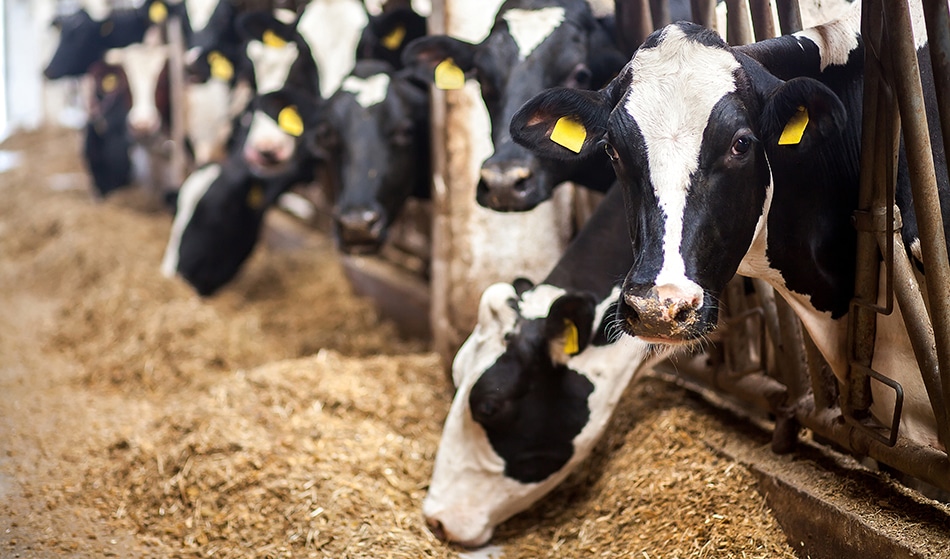FDA BAM Listeria Detection in Animal Feed Samples
The FDA Bacteriological Analytical Manual (BAM) procedure for detecting Listeria monocytogenes in animal feed samples is a critical method for ensuring food safety and compliance with regulatory standards. This protocol, detailed in the FDA's official guidelines, provides a standardized approach to identifying potential contaminants that could pose health risks if consumed by animals or humans.
Animal feed contamination can lead to serious issues such as Listeriosis, which is particularly dangerous for pregnant women, newborns, and individuals with weakened immune systems. The presence of Listeria monocytogenes in animal feeds, especially those intended for food-producing animals like cattle, pigs, and poultry, underscores the importance of rigorous testing protocols.
The FDA BAM method involves several steps that are essential for accurate detection:
- Sample Collection: Proper collection and preservation of feed samples is crucial to ensure the integrity of the test. Samples should be collected from multiple locations within a batch to reflect variability.
- Preservation: Samples are typically preserved with a buffer solution that inhibits growth, allowing for extended storage time before analysis.
The FDA BAM procedure then involves:
- Enrichment: The sample is inoculated into enrichment broth to enhance the presence of Listeria monocytogenes, making it more detectable.
- Isolation and Identification: Following incubation, colonies are isolated and identified using biochemical tests or molecular methods like PCR (polymerase chain reaction).
The method's accuracy is enhanced by its strict adherence to FDA guidelines. This ensures that the test results are reliable and can be used in regulatory decision-making processes.
Compliance with this procedure is not just a matter of ensuring product safety but also about maintaining trust in the market. Consumers expect animal products, including those derived from animals fed such feeds, to meet stringent quality standards.
The FDA BAM method's robustness has made it a cornerstone for regulatory compliance and food safety assurance. By adhering to this protocol, laboratories ensure that they are providing accurate and actionable data that can help prevent contamination and safeguard public health.
Applied Standards
The FDA BAM Listeria detection method is governed by several internationally recognized standards. These include:
- ISO/IEC 17025:2017 - This standard ensures that the laboratory providing this service operates to quality management systems.
- ASTM E691-13 - Provides guidelines for the evaluation of analytical methods used in testing and calibration laboratories.
The FDA itself provides detailed protocols within its Bacteriological Analytical Manual, which serves as a primary reference document for this service. Compliance with these standards ensures that the testing process is consistent, reproducible, and accurate.
Why Choose This Test
Selecting FDA BAM Listeria detection in animal feed samples is a strategic decision aimed at safeguarding public health and maintaining compliance with regulatory requirements. Here’s why this test stands out:
- Regulatory Compliance: Ensures adherence to FDA guidelines, which are designed to protect consumers from potentially harmful contaminants.
- Quality Assurance: Provides a reliable method for detecting Listeria monocytogenes, helping manufacturers maintain product quality and consistency.
- Risk Management: Identifies potential risks early in the production process, allowing for timely corrective actions to be taken.
The FDA BAM method’s robustness and adherence to international standards make it a preferred choice among food safety professionals. It not only meets current regulatory requirements but also sets a high bar for future compliance.
Quality and Reliability Assurance
The quality and reliability of FDA BAM Listeria detection in animal feed samples are paramount to the success of this service. Our laboratory employs advanced techniques and adheres strictly to FDA guidelines, ensuring consistent accuracy.
We use state-of-the-art equipment calibrated according to ISO/IEC 17025:2017 standards. This ensures that our testing instruments provide precise results every time. Our team of experts is trained in the latest methodologies and protocols, further enhancing the reliability of our service.
Customer feedback plays a crucial role in maintaining high standards. We continuously seek input from quality managers, compliance officers, R&D engineers, and procurement teams to refine our processes. This collaborative approach ensures that we are addressing real-world needs effectively.





